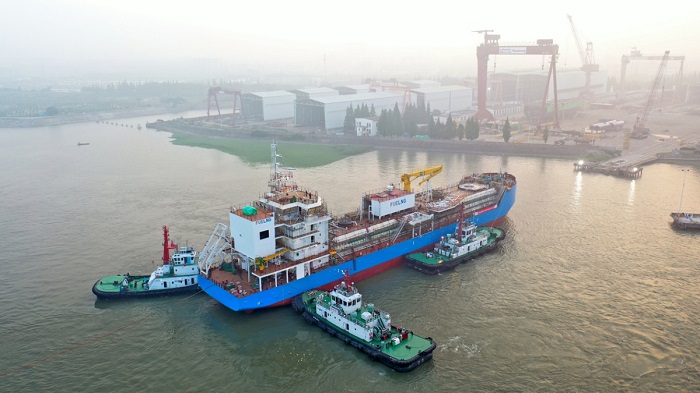Ammonia requires massive scale up to meet shipping's needs
Industry experts discussed challenges related to replacing conventional fuel with new fuels on Day 2 of Riviera’s Tanker Shipping & Trade, Europe virtual conference
While touting ammonia’s potential as a frontrunner, ABS director for global sustainability Rene Laursen noted that production of the fuel would have to be scaled up massively.
At present, ammonia is produced by the century-old Haber-Bosch process which has been optimised with little scope for improvement. Producers are now looking at using carbon capture in production (blue ammonia) or renewables (green ammonia) to produce the fuel.
To replace conventional fuels, ammonia production would have to hit 440M tonnes per annum said Mr Laursen, roughly three to four times what is currently produced. To produce that quantity of green ammonia, the level of renewable energy production will have to be tripled.
The compound advantages are its production efficiency in comparison to diesel, the lowered safety risk compared to hydrogen because of ammonia’s lower flashpoint, and projected lower impact on newbuilding costs.
Class and safety rules do exist for ammonia. ABS has developed rules for ammonia refrigerant systems incorporating IACS UR M57 and the society is also participating in a joint development project (currently entering Phase 2) with MAN Energy Solutions and the Shanghai Merchant Ship Design & Research Institute to build an ammonia-fuelled container feeder.
With LNG shipping now commonplace gobally, Bureau Veritas global market leader gas carriers and oil tankers Carlos Guerrero said bunkering for the fuel remains a concern but that there are several planned bunkering locations in the works including at Tokyo and Marseille.
Of the 33 LNG bunker vessels in service worldwide, Mr Guerrero said 19 were classified by BV with 17 more under construction.
Capex on a vessel using LNG as fuel is roughly 10% of newbuilding price and at present, Mr Guerrero said both HFOs with scrubbers and VLSFOs are cheaper options. From the operating perspective, LNG is abundant and the availability of ship-to-ship bunkering has increased while the premium on bunkering has decreased. However, the price of LNG is still liable to fluctuate and there are price differences between regions.
Mr Guerrero also stressed that LNG is a transition fuel, a view shared by MSC.
Studies completed in 2019 indicate there are significant environmental and health benefits from using LNG as this almost eliminates NOx, SOx and particulate matter emissions. The fuel also offers the possibility of retrofits – Mr Guerrero cited two BV-classed chemical tankers that underwent a conversion but hinted this might not always be economically feasible.
Providing a tanker owner’s perspective, Hafnia executive vice president technical Ralph Juhl said the engine technology for methanol is available for both two and four-stroke engines and is a low flashpoint fuel.
But as with ammonia, the infrastructure for large-scale methanol bunkering is wanting. Methanol fuel demands larger tanks and bunkering methanol is not easy to find.
“A methanol vessel today will most likely be built to a certain trait on a fixed charter or operate between ports where methanol supply is available” said Mr Juhl.
He added that in theory, as a liquid fuel, only minor modifications to the existing infrastructure could allow methanol to be used more widely.
Mr Laurens shared this view and said given the choice, most owners would prefer methanol to LNG because of lower installation costs, bunkering and ease of use on the ship.
In addition to scaling production, Mr Juhl conceded that more needs to be done to incentivise methanol use as the fuel price remains a stumbling block, with low carbon methanol set to cost even more. Mr Laurens said the spikes in methanol prices are largely dictated by its use in the chemicals industry.
During combustion, fossil fuel-produced methanol emits roughly 10% less CO2 and considering the lifecycle of the fuel, the emissions produced are comparable to conventional fuel. IMO is also set to incorporate methanol into the IGF code to formalise safety regulations.
Hafnia believes that future production of bio methanol and synthetic methanol will change this, and information suggests that the main engine dries more on methanol use and requires higher lubrication. The company also expects opex to reduce, with savings on filters, purifiers, heaters and other essential equipment due to the cleaner fuel.



































